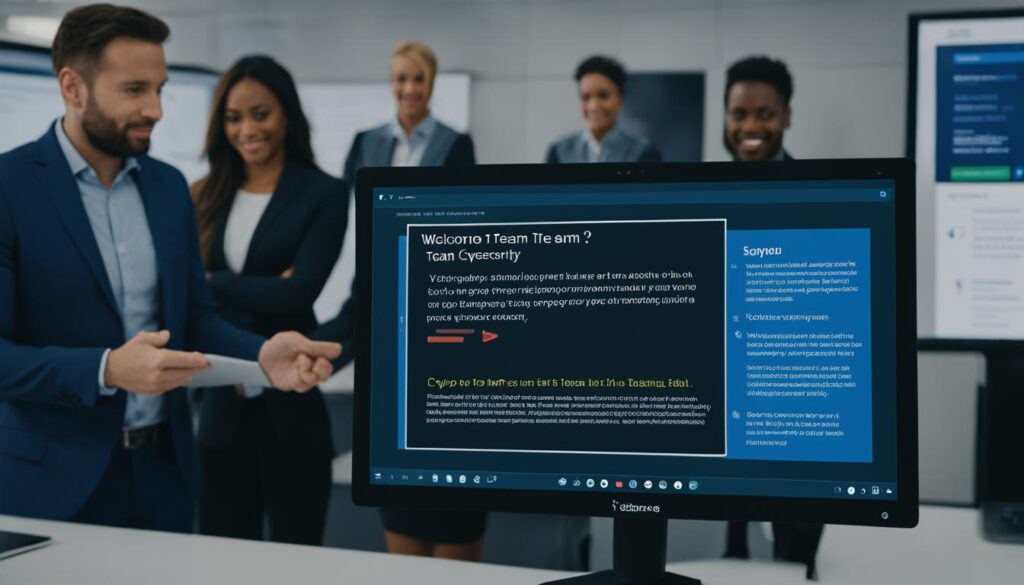Welcome to the world of employee onboarding, a crucial phase in the journey of new hires. While the onboarding process is essential for their success and the success of the business, it often comes with its fair share of challenges. These challenges can range from new hire orientation problems to employee assimilation barriers and everything in between, making it crucial to address them for a seamless onboarding experience and improved employee retention.
One significant challenge organizations face is excessive manual paperwork, which can overwhelm new hires and slow down the onboarding process. Another common obstacle is information overload on the first day, where new employees are bombarded with too much information, hindering their ability to absorb and retain it all.
Unclear job roles and generic onboarding without context also pose challenges. When new hires are unsure of their responsibilities or receive a one-size-fits-all onboarding experience, it can lead to confusion and frustration. Additionally, a lack of employee engagement during the onboarding process can negatively impact productivity and retention.
However, overcoming these challenges is possible with the right strategies and tools in place. By implementing digital solutions, streamlining paperwork processes, and providing role-based and personalized onboarding experiences, organizations can enhance the onboarding process. Fostering a positive and engaging environment, offering mentoring and coaching, and customizing the onboarding program are also effective strategies to boost employee engagement.
Key Takeaways:
- Excessive manual paperwork can be streamlined by adopting digital onboarding software or a unified HR management solution.
- Spread necessary information over multiple days and provide pre and post-onboarding checklists to avoid information overload on the first day.
- Ensure job roles are clear and align onboarding tasks with the requirements of the role.
- Implement role-based onboarding and provide contextual training using employee onboarding software or digital adoption platforms.
- Foster employee engagement through personalized support, onboarding buddies or mentors, and regular check-ins.
By addressing these challenges and implementing effective onboarding strategies, organizations can create a successful onboarding process that sets their new hires up for success and improves overall employee retention.
Excessive Manual Paperwork
Excessive manual paperwork can be a burden for both new hires and HR teams during the employee onboarding process. The time-consuming task of completing, organizing, and storing physical documents can slow down the entire onboarding process and leave room for errors.
However, there is a solution to streamline and simplify the onboarding paperwork: digital onboarding software. By adopting a paperless onboarding process and implementing a unified HR management solution, organizations can eliminate the need for excessive manual paperwork.
With digital onboarding software, all necessary documents can be provided in a digital format, making it easier for new hires to access and complete them. Additionally, a unified HR management solution allows for centralized document storage and management, ensuring that all paperwork is completed accurately and on time.
By embracing a paperless approach and leveraging technology, organizations can significantly reduce the time and effort spent on manual paperwork, freeing up valuable resources and improving the overall efficiency of the onboarding process.
The Benefits of Digital Onboarding Software and a Unified HR Management Solution:
- Efficiency: By digitizing the onboarding process, organizations can save time and eliminate errors associated with manual paperwork.
- Cost Savings: Going paperless reduces printing, storage, and administrative costs.
- Improved Accuracy: Digital forms and automated workflows minimize the risk of errors or missing information.
- Enhanced Security: Digital document storage provides better data protection compared to physical files.
- Accessibility: New hires can access and complete documents from anywhere, at any time.
- Streamlined Collaboration: HR teams can collaborate more effectively by sharing and reviewing digital documents.
Implementing digital onboarding software and a unified HR management solution can revolutionize your onboarding process, making it more efficient, secure, and user-friendly. It’s time to leave behind excessive manual paperwork and embrace the advantages of a paperless onboarding experience.
Information Overload on the First Day
New hires often experience information overload on their first day, which can impede their ability to absorb and retain important information. When bombarded with excessive data, it becomes challenging for employees to prioritize and understand key tasks and responsibilities. This can lead to confusion and overwhelm, affecting their overall onboarding experience.
To alleviate information overload and ensure a more effective onboarding process, HR teams can adopt strategies to spread out essential information over multiple days. By breaking down the onboarding process into manageable segments, new employees can focus on specific tasks and digest the information more easily.
To assist with this approach, pre and post-onboarding checklists can be provided to new employees. These checklists outline the various tasks and information they need to assimilate during their onboarding journey. Having clear task lists not only helps employees stay organized but also ensures they feel more supported throughout the process.
Integrating digital adoption platforms, such as the Whatfix digital adoption platform, can further enhance the onboarding experience. These platforms guide new employees through crucial onboarding items and provide step-by-step instructions on how to complete various tasks efficiently. By leveraging digital adoption platforms, organizations can reduce information overload and create a more streamlined onboarding process.

Unclear Job Roles
When new hires have unclear job roles, it can lead to confusion and frustration. To address this challenge, HR and management can take several steps to ensure that new employees have a clear understanding of their roles and responsibilities from the beginning.
Updated Job Postings and Role-Aligned Onboarding Tasks
One crucial aspect is updating job postings to accurately reflect the role’s requirements and expectations. By providing detailed and specific job descriptions, organizations can attract candidates who possess the necessary skills and qualifications.
Additionally, aligning onboarding tasks with the requirements of the role can help new hires understand their responsibilities and expectations. By customizing the onboarding process to each job role, organizations can enhance the new employee’s understanding of how their role contributes to the overall objectives of the company.
One-on-One Check-Ins and Personalized New-Hire Training
Conducting one-on-one check-ins with new employees is an effective way to address any concerns or questions regarding their job roles. These personalized interactions allow managers to provide guidance, clarify expectations, and ensure that employees feel supported.
Furthermore, offering personalized new-hire training can greatly assist in clarifying job roles. By tailoring training programs to the specific needs of each employee, organizations can ensure that new hires receive the knowledge and skills necessary to excel in their roles.
Mentoring and Coaching
Mentoring and coaching are invaluable resources for new employees who need guidance and support in understanding their job roles. Assigning experienced employees or senior leaders as mentors can provide new hires with the opportunity to learn from someone who has navigated similar roles and challenges within the organization. Regular mentoring and coaching sessions can help foster a sense of belonging and ensure that new employees feel valued and supported.
By implementing these strategies, organizations can overcome the challenge of unclear job roles during the onboarding process, setting new hires up for success and facilitating a seamless transition into their new roles. Providing clear expectations, personalized support, and opportunities for growth and development can contribute to improved employee satisfaction and retention.
Generic Onboarding without Context
Implementing a generic onboarding process that does not consider the specific needs of each job role can hinder the onboarding experience for new hires. It is essential to provide personalized onboarding that aligns with the requirements of each role to ensure a smooth transition into the organization.
One effective solution is to leverage employee onboarding software that enables role-based onboarding. This software allows organizations to customize the onboarding process based on the unique responsibilities and tasks associated with each job role. By tailoring the onboarding experience to the specific needs of each role, new hires can quickly understand their responsibilities and feel more confident in their ability to contribute to the organization.

Automated digital onboarding workflows can also streamline the onboarding process. By automating repetitive tasks and steps, such as document signing and policy acknowledgment, organizations can save time and ensure that all necessary onboarding activities are completed efficiently.
Another crucial aspect of personalized onboarding is providing contextual training. The Whatfix digital adoption platform offers a solution to deliver role-specific training and onboarding paths. This platform guides new hires through their onboarding journey, providing them with the relevant information and resources they need to excel in their specific role. Contextual training enables employees to quickly understand how their role fits into the larger organizational context and promotes a faster learning curve.
By implementing role-based onboarding, leveraging employee onboarding software for automated digital workflows, and providing contextual training through tools like the Whatfix digital adoption platform, organizations can overcome the challenges of generic onboarding. These strategies ensure that new hires receive the necessary information and resources tailored to their roles, leading to a more effective and engaging onboarding experience.
Lack of Employee Engagement
Lack of employee engagement during the onboarding process can have a detrimental effect on productivity and employee retention. When new hires are disengaged, they may struggle to connect with the company culture, understand their role, and perform at their best. To ensure a successful onboarding experience that promotes engagement and sets the stage for long-term productivity, organizations need to take proactive steps.
One effective strategy is to customize the onboarding program to meet the unique needs and preferences of individual employees. Recognizing that every new hire is different and has varying levels of experience, incorporating personalized elements into the onboarding process can help employees feel valued and supported from day one. This could include tailoring training materials, assigning relevant tasks and projects, and providing opportunities for specialized skill development.
Another crucial aspect of fostering employee engagement during onboarding is to assign an onboarding buddy or mentor. This designated person will serve as a guide and provide support, answering questions, sharing insights, and helping new employees navigate the company culture. By having a dedicated mentor, new hires can feel more comfortable and connected, enhancing their engagement and reducing feelings of isolation.
Regular check-ins are also essential to maintain employee engagement during the onboarding process. Managers should schedule frequent meetings to assess progress, provide feedback, and address any concerns or challenges. These check-ins create opportunities for open communication, allowing new hires to voice their thoughts and receive guidance, ultimately increasing engagement and fostering a sense of belonging.
In conclusion, addressing the lack of employee engagement during the onboarding process is crucial for maximizing productivity and improving employee retention. By customizing the onboarding program, assigning an onboarding buddy or mentor, and conducting regular check-ins, organizations can create an engaging onboarding experience that sets the stage for long-term success.
Conclusion
In conclusion, overcoming the challenges of employee onboarding is essential for improving new hire orientation and enhancing employee retention. Organizations face various hurdles during the onboarding process, including excessive manual paperwork, information overload on the first day, unclear job roles, generic onboarding without context, lack of resources, and a lack of employee engagement. However, by implementing effective strategies and solutions, these challenges can be overcome.
To address the issue of excessive manual paperwork, organizations can adopt digital onboarding software or a unified HR management solution. This eliminates the need for physical paperwork, streamlines the documentation process, and ensures accuracy and efficiency.
To prevent information overload on the first day, HR teams can spread out crucial information over multiple days and provide pre and post-onboarding checklists. Additionally, tools such as Whatfix’s digital adoption platform can guide new employees through the onboarding process, ensuring they have access to the most important information at the right time.
Unclear job roles can be addressed by aligning onboarding tasks with the requirements of the role, providing personalized training and mentorship, and ensuring accurate job postings. By doing so, new employees can have a clear understanding of their responsibilities and feel supported from the start.
Generic onboarding without context can be improved by implementing employee onboarding software that allows for role-based onboarding. This enables organizations to provide tailored information and resources based on each employee’s specific job role, resulting in a more effective onboarding experience.
Improving employee engagement during the onboarding process is crucial for overall success and retention. This can be achieved by customizing onboarding programs, assigning onboarding buddies or mentors, and conducting regular check-ins to address any concerns and provide ongoing support.
By addressing these challenges and implementing effective onboarding strategies, organizations can create a smooth and engaging onboarding process that sets their new hires up for success and improves overall employee retention.
FAQ
What are the common challenges organizations face during the employee onboarding process?
The common challenges organizations face during the employee onboarding process include excessive manual paperwork, information overload on the first day, unclear job roles, generic onboarding without context, lack of investment in resources, and a lack of employee engagement.
How can organizations address the challenge of excessive manual paperwork during employee onboarding?
Organizations can address the challenge of excessive manual paperwork during employee onboarding by providing all necessary documents in a digital, paperless format. Implementing employee onboarding software or a unified HR management solution can streamline the documentation process and ensure that all paperwork is completed accurately and on time.
How can organizations avoid information overload on the first day of employee onboarding?
To avoid information overload, HR teams can spread necessary information over the course of a few days and provide pre and post-onboarding checklists to break down the information. Tools like Whatfix’s digital adoption platform can also guide new employees through the most important onboarding items.
What can organizations do to address the challenge of unclear job roles during employee onboarding?
Organizations can address the challenge of unclear job roles during employee onboarding by ensuring that job postings accurately reflect the role and responsibilities and aligning onboarding tasks with the requirements of the role. One-on-one check-ins, personalized training, and mentoring or coaching can also help new employees feel supported and informed about their role.
How can organizations overcome the challenge of generic onboarding without context?
Organizations can overcome the challenge of generic onboarding without context by implementing employee onboarding software that allows for role-based onboarding and enables automated digital onboarding workflows. Tools like the Whatfix digital adoption platform can provide contextual, role-based training and onboarding paths to ensure that new hires receive the information and resources they need to excel in their specific role.
What can organizations do to address the lack of employee engagement during the onboarding process?
To address the lack of employee engagement during the onboarding process, organizations should focus on fostering employee engagement throughout the onboarding process, starting before the new hire’s first day. Assigning an onboarding buddy or mentor, conducting regular check-ins, and providing opportunities for one-on-one interactions can help new employees feel supported and engaged from the beginning.
Why is overcoming employee onboarding challenges important?
Overcoming employee onboarding challenges is important because it improves new hire orientation, enhances employee retention, and contributes to a successful onboarding process. By addressing challenges such as excessive manual paperwork, information overload, unclear job roles, generic onboarding, lack of resources, and lack of employee engagement, organizations can create a smooth onboarding experience and set their employees up for success.




